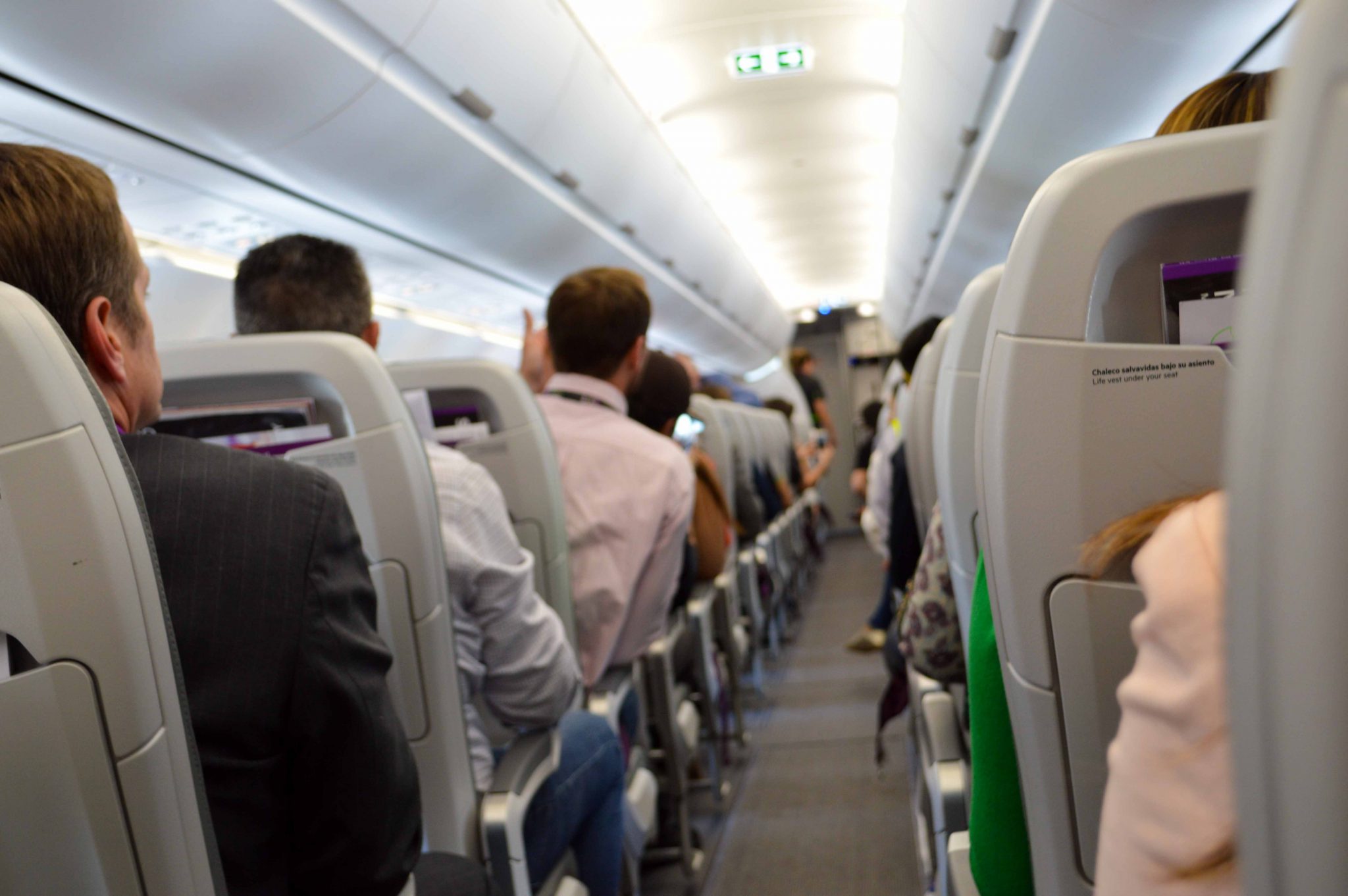In July 2025, air passenger traffic across the region reached 42.8 million, a year-on-year increase of 4.4% compared with July 2024, equivalent to 1.8 million additional travelers. This pace of growth outperformed June, adding one percentage point, and was driven primarily by LAC-based carriers, which for the second consecutive month led global expansion with a 7.2% increase[i]. More than 60% of July’s net passenger growth came from intra-regional markets, while traffic between LAC and the United States posted its strongest performance of the year, growing 3.6% year-on-year.
Argentina, Panama, Peru, and Brazil Led Growth Among the Region’s Largest Markets
Argentina recorded the highest year-on-year percentage growth in July (+11%), supported by an 8.3% increase in domestic traffic and a 14% rise in international demand. Total passengers reached a new all-time high for July, 6% year-on-year above the 2019 pre-pandemic benchmark. Between January and July, Argentina handled 19 million passengers, up 14.7% from 2024.
Panama posted a 9% year-on-year increase in total passenger traffic in July, driven by strong intra-regional demand (+10%) and steady growth with North America (+5%). Routes with Central America and the Caribbean showed the fastest expansion, notably Panama–San José (+21%), Panama–Punta Cana (+27%), Panama–El Salvador (+22%), and Panama–Guatemala (+15%).
Peru achieved robust growth of 8.6% year-on-year, with domestic traffic expanding at double digits (+10%) and international traffic rising 6%. Domestic passenger volumes reached a record 1.5 million in July, marking the seventh consecutive monthly record in 2025. On the international side, flight operations increased 7% compared to July 2024, with the Peru–Colombia market standing out: frequencies grew 25% year-on-year[ii], complemented by a 17% year-on-year rise in Colombian tourist arrivals to Peru[iii].
Brazil marked its fifth consecutive month of record domestic traffic. In July 9 million passengers traveled within the country, a 4.9% increase compared to July 2024. Despite a 2% year-on-year decline in the number of domestic flights operated, average seating capacity per flight rose by 3%, from 153 to 161 seats[iv]. On the international side, traffic increased 13.6% year-on-year, driven by a sharp 43% surge in international tourist arrivals by air[v]. Overall, Brazil’s total passenger traffic grew 7.5% versus July 2024.
“Latin American airlines posting 7.2% year-on-year growth in July—the highest worldwide for the second month in a row—underscores not only the strength of our industry but also travelers’ confidence in the connectivity offered across the region. Over 60% of July’s net passenger growth came from intra-regional routes, highlighting an increasingly dynamic market,” said Peter Cerdá, CEO of ALTA.
Mexico and Colombia showed a modest rebound in domestic traffic
In Mexico, 11 million passengers flew in July (+1.8% year-on-year), recovering from the decline observed in June (–0.4% year-on-year). Domestic traffic increased 1.3% year-on-year, while international traffic rose 2.4%. Traffic with the United States—the region’s third-largest country pair after Brazil and Mexico’s domestic markets—bounced back with a 1.3% year-on-year increase after falling in June (–2.1%). However, for the January–July period, this traffic flow remained virtually flat (–0.1%, or 24,000 fewer passengers).
In Colombia, domestic traffic grew 0.6% year-on-year in July after five consecutive months of decline, though cumulative traffic from January to July was still down 1.7%. The year-to-date downturn has been driven mainly by Bogotá (–4.6%), which accounts for more than 30% of the domestic market. In contrast, international traffic rose 6.7% year-on-year, supported by stronger flows with neighboring countries: Ecuador (+12%), Brazil (+27%), Peru (+21%), and Venezuela (+11%).
Chile and Ecuador: More Moderate Growth
Chile posted its weakest result so far in 2025, with passenger volumes rising only 0.8% compared to July 2024. Domestic traffic contracted 2.4% year-on-year, while international demand expanded 4.6%. In Ecuador, total traffic grew 4.1%, driven by a 5.6% increase in international volumes. Notably, arrivals of U.S. resident tourists by air climbed 11% year-on-year[vi], helping to fuel international growth.
Caribbean and Central America
Passenger traffic to and from the Caribbean expanded 6.2% year-on-year in July, led by the Dominican Republic, the subregion’s largest market, which grew 5.5%. Traffic between the Dominican Republic and the United States recovered modestly, rising 5.2% year-on-year after a June decline (–1.1%). Jamaica, the Caribbean’s second-largest market, registered its strongest month of the year with a year-on-year growth of 13.1% and 703,000 total passengers. Guyana, a small but fast-growing market in recent years, expanded 12% year-on-year in July and has accumulated an 18% increase in international arrivals so far in 2025[vii].
Costa Rica posted a 7% year-on-year increase in July, driven by growth in international tourist arrivals by air from South America (+17.7%) and Europe (+3.9%). Arrivals from the United States rose slightly (+0.3% year-on-year), though cumulative volumes from January to July were down 2.3%[viii]. In El Salvador, passenger traffic expanded 2.4% year-on-year in July after five consecutive months of decline. So far in 2025, the country has handled a total of 3 million passengers. Guatemala reported a 3.9% year-on-year increase in total traffic in July, with 453,000 passengers carried during the month.
Key Indicators
- Capacity, measured in Available Seat Kilometers (ASK), increased 5.4% year-on-year.
- Demand, in Revenue Passenger Kilometers (RPK), rose 4.6% year-on-year.
- The average load factor stood at 85.8%.
- For the January–July period, air traffic in LAC totaled 279.9 million passengers, representing 3.7% growth compared with the same period in 2024.
Glossary: RPK (Revenue Passenger Kilometers): number of paying passengers transported multiplied by the distance flown | ASK (Available Seat Kilometers): number of seats available for sale multiplied by the distance flown | Load Factor: obtained by dividing RPK by ASK.
Methodological Note
In this document, Latin America and the Caribbean (LAC) is defined as the combined total of South America, Central America, the Caribbean, and Mexico. This definition is applied consistently across all regional and international traffic analyses.
Domestic traffic refers to flights operated within the same country. International traffic is classified into two broad segments:
- Intra-regional international traffic: flights between countries within LAC (e.g., Argentina–Brazil or Mexico–Colombia).
- Extra-regional international traffic: flights between LAC and other regions of the world, such as North America, Europe, Asia-Pacific, the Middle East, or Africa.
[i] IATA. Air Passenger Market Analysis – July 2025. Published August 29, 2025. Available at : https://www.iata.org/en/iata-repository/publications/economic-reports/air-passenger-market-analysis-july-2025/
[ii] ALTA. Own analysis based on CIRIUM SRS Analyzer data, July 2025.
[iii] Migración Colombia. Flujos Migratorios – Microdatos Planeación. Accessed September 2025. Available at: https://www.migracioncolombia.gov.co/microdatos-planeacion/flujos-migratorios.
[iv] ALTA. Own analysis based on CIRIUM SRS Analyzer data, July 2025.
[v] Embratur – Brazilian Tourism Institute. Data Panels – International Tourist Arrivals by Air. Accessed September 2025. Available at: https://embratur.com.br/para-o-trader/inteligencia-de-dados/paineis-de-dados/chegadas-internacionais/
[vi] Ministry of Tourism of Ecuador. International Entries and Departures – Tourism in Figures. Accessed September 2025, updated February 17, 2025. Available at: https://servicios.turismo.gob.ec/turismo-en-cifras/entradas-y-salidas-internacionales/
[vii] Department of Public Information, Guyana. Guyana Records 18 Percent Increase in Visitor Arrivals from January–July 2025. Published August 11, 2025. Accessed September 2025. Available at: https://dpi.gov.gy/guyana-records-18-per-cent-increase-in-visitor-arrivals-from-january-july-2025/
[viii] Instituto Costarricense de Turismo (ICT). International Tourist Arrivals by Country and Entry Point – July 2025. Dataset available at: 2025-07_Llegadas_internacionales.xlsx



